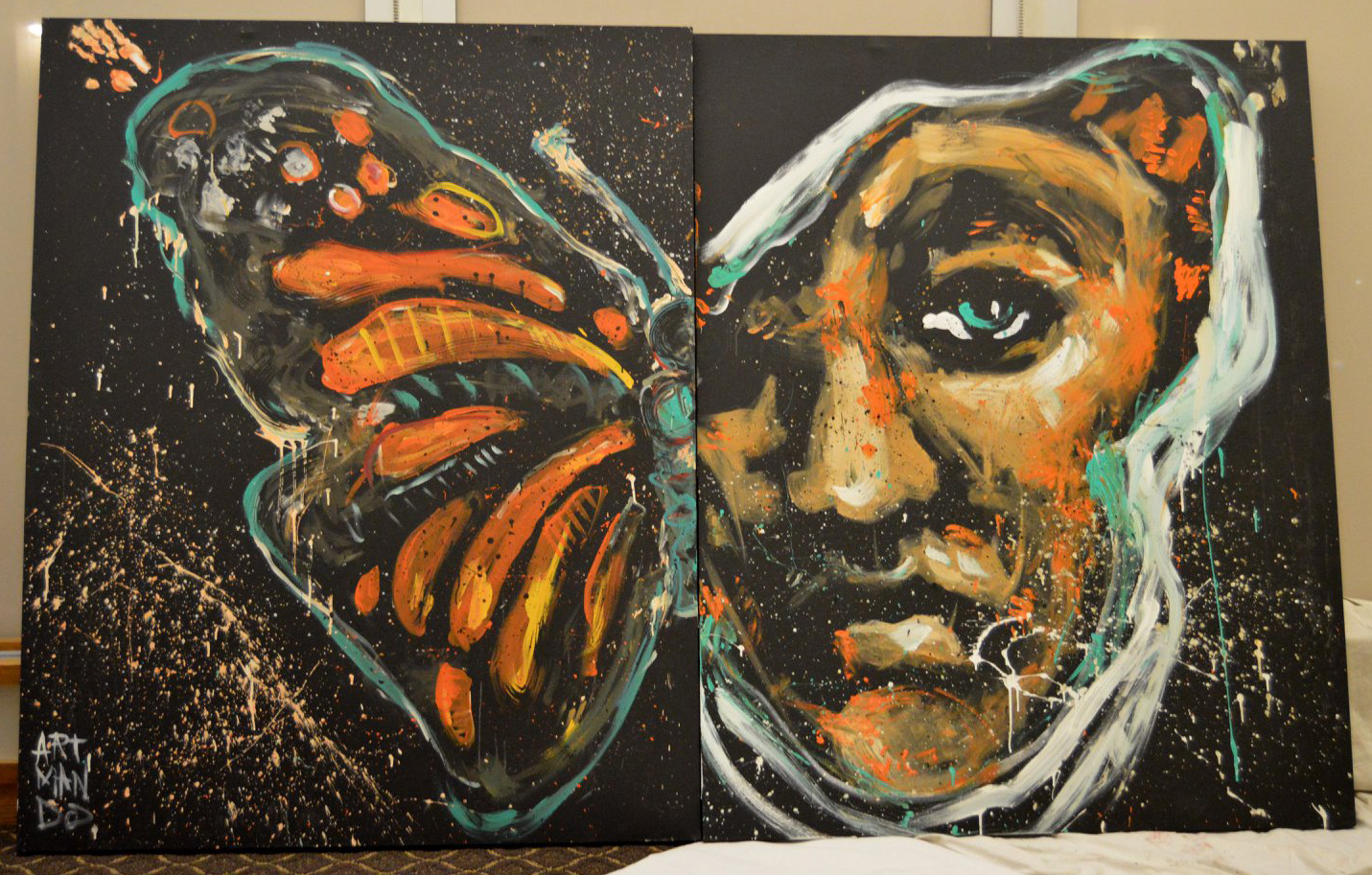Reflections

Art created by Armando Silva live for Journey of Hope event March 23, 2018
Going into this project, I anticipated it being hard to make connections; however, I did not realize just how difficult it would actually be. As a vulnerable population, the people who work with them are extremely protective. If they allow you in at all, they will frequently require that your work serve broader projects that they are already working on. Truthfully, sometimes, the natural born American citizens were the hardest barriers to break through.
I have worked with vulnerable populations before; in fact, that tends to be my primary focus. However, I have never dealt with language and cultural barriers to quite the extent that I did. If you can manage to get into the same room as a refugee, they are frequently lovely and very open. It is finding a way to be together in the room in the first place that can often prove most challenging.
Throughout my process, I learned that refugees change cell phone numbers frequently, that they tend to prefer texts over calling and generally don't email, and that you may need several reminders and flexibility for rescheduling if you try to set up meetings. They may have appointments come up, they might not have childcare coverage, or they may have issues with transportation.
As the Refugee Integration Survey describes, if you are expecting refugees to fit in neatly with a 9-5 structure, you are going to be frustrated and disappointed. Refugees are highly mobile, and their schedules are very fluid. They often function communally, relying on each other for childcare and rides. They may have jobs that require them to work odd hours, such as bakery or meat processing work. You need to be able to flex around them.
The best way to get in touch with refugees is to know where they spend their time. If you can catch them coming out of class or church, you are far more likely to be able to set something up - especially if their number has changed.
For me, it took months to even make contact with the people. I took days off of work only to have no one show up. The greatest things you can bring with you into an undertaking with a population like this are time, flexibility, and understanding.
That said, they really are very gracious on the whole. Their fluidity may mean that if you catch them, they will sit and talk to you right then and there - a luxury not freely offered with the average western population. Many of them are open and will tell you anything and everything you want to know. They open up their homes, their lives, their tables, and are eager to dispel myths about their population.
Without time constraints, it would be much easier to do so much more with them. You will not meet a more open group of people, excited that they get to practice their English and interact with people outside of their normal communities. Even with all of the challenges I faced with access, I am very grateful to have had the opportunity to meet each and every one that I did and I cannot wait to continue.